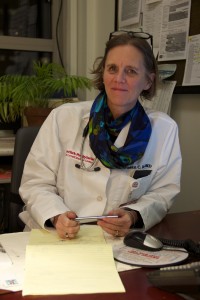 From my very first days working at New York
From my very first days working at New York  Presbyterian Hospital’s Center for Special Studies, I marveled at the stories I heard. Being a part of a person’s illness and/or death has always been a privilege for me. It creates a unique and intimate bond that’s quite unforgettable.
Presbyterian Hospital’s Center for Special Studies, I marveled at the stories I heard. Being a part of a person’s illness and/or death has always been a privilege for me. It creates a unique and intimate bond that’s quite unforgettable.
Over the years, I found myself wanting to write about my patients and about the special care we were able to provide them through our multidisciplinary approach. And I wanted to write about AIDS care in the 1990s, that transition from being able to offer little more than a hand to hold while dying to now, enabling patients not only to be able to walk out of the hospital but stay out of it altogether. Voices in the Band, the culmination of my desire to share these stories, took ten years to come into being but now it’s finally complete.
Patients’ stories are the heart of this book. In many ways, stories are the heart of medicine itself…listening to and addressing patients’ stories. As a part of my book writing journey, I returned to Columbia in 2009 to pursue a Master’s degree in Narrative Medicine. I wanted to learn more about how to listen and affiliate myself with stories, and eventually to bring this knowledge back to my patients, my colleagues and my students. The program helped me finish this book, and I now teach Narrative Medicine in a number of formats at Weill Cornell Medical College.
The patients described in my book are an amazing array of brave, depraved, strong, entitled, admirable, self-centered, strange, funny, daring, gifted, exasperating, wonderful and sad. And more. At the CSS clinic, most of the patients are indigent and few have had an education beyond high school, if that. Many are gay men and many of the patients use or have used drugs. They all have HIV. Every day in the epidemic’s early years, they brought us the stories of their lives. We listened to them and we took care of them as best we could.
Voices in the Band is written for a lay audience, for all of us, because all of us have been affected by HIV: our friends, relatives, acquaintances, colleagues, celebrities, heroes and even ourselves. It is neither a reference book nor a medical book but rather, a story of a particularly important time and place in our collective history and some of the people who were involved in that time and place. I am hopeful that readers of this book will come away with an understanding of not just the disease HIV/AIDS, but of the patients themselves and the doctors and providers who cared for them. Enjoy.


